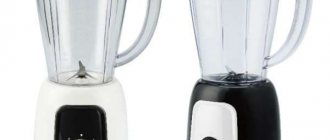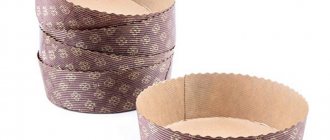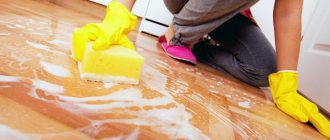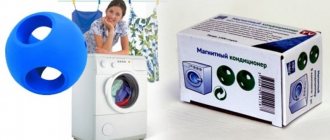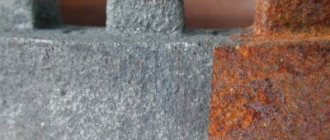If you have to dry a craft for the first time, it will be useful to learn some subtleties. First of all, you need to understand the difference between drying and baking. It is a mistaken belief that an oven – electric or gas – is only suitable for baking. You can also dry the dough in it. It is important to know how and for how long.
There are several ways to dry salt dough:
- in the sun;
- at room temperature;
- on battery;
- in the oven;
- in the microwave;
- in a combined way.
Each of them has its own advantages and disadvantages.
| Type of drying | pros | Minuses |
| In the sun | Does not require energy consumption | The craft takes a long time to dry |
| At room temperature | Economical | It takes a long time to dry. Indentations will remain on the product in contact with any surface. |
| On battery | Convenient to use in winter when the batteries are warm | The area does not allow drying volumetric figures |
| In the oven | The fastest way | Difficult to calculate temperature |
| In the microwave | Microwave cannot be used! | |
| Combined method | Suitable for drying large crafts | Labour intensive |
How to properly knead salt dough
Dough is a material that is easy to prepare. Place 1/2 cup salt and 1 cup flour in a bowl and slowly add water. You need enough water to make the dough dry and elastic. If the dough becomes sticky, you need to add more flour. The dough is kneaded and used immediately, because... after a few hours it begins to dry out and crust over.
The softness and elasticity of the material depends on how to knead the dough correctly. It is better to use fine salt and flour without any impurities. If the salt is coarse, then experienced professionals recommend first dissolving it in warm water. Some people add another spoonful of PVA glue to a glass of flour so that the dough figures hold their shape better. The dough must be kneaded thoroughly so that no lumps form. Before sculpting, it is better to knead each piece with your fingers until the dough turns into soft plasticine.
At the first stage of work, you can color the material. To do this, while mixing the dough components, pour a little gouache or natural food coloring into the bowl. This way the dough will be colored even before drying and will receive a beautiful color with different shades after drying. And if you add aromatic oils to the material, the product will get a pleasant smell.
Experienced craftsmen use a special technique for preparing dough. To do this, mix fine salt and wheat flour in a 1:2 ratio in a saucepan. Add a tablespoon of vegetable oil and cream to the mixture. You can immediately add food coloring or simple paints for painting. Then pour in water in the same volume as the flour.
The mixture is placed on low heat and stirred constantly until the consistency becomes thick. Then the dough is kneaded on the table. This material is more elastic and holds its shape well. This method is suitable for professional salt dough products.
What tools will you need?
To create dough and figures you need to prepare the following tools:
- a small rolling pin;
- modeling board;
- small knife;
- brush;
- cookie cutters;
- a bowl of water
- decorative elements (beads, lace, buttons);
- ballpoint pen refill.
How to dry dough crafts
Drying is an important step in making dough figures. The workpiece may deteriorate, crack, burst or warp due to improper drying. Drying dough products can be done in different ways.
The natural way is in the air
In summer, dough pieces can be air dried. It is better to choose sunny places. There, a millimeter of the product will be dried in a few hours. You can dry a small figurine in a day. However, items that are too thin may bend slightly. Therefore, it is better to place thick products in the sun. For drying, you need to choose flat surfaces so that the figures do not spoil their appearance or become deformed.
On the heating radiator
Dough crafts cannot dry in the air in winter, so the heat of the sun will replace the heating radiator in the cold season. The main thing is that its surface is smooth. The products are also laid out on the radiator. They dry faster than in the sun if the radiator is hot. If the radiator has a complex shape, then the dough figures can simply be hung next to each other by a thread. This is more convenient to do, for example, when drying on a radiator.
In an electric oven
The electric oven is heated to a temperature of 50°C to 150°C. At the highest temperature, a millimeter of the product will dry in 30 minutes. However, it is better to dry large items at 150°C. For small pieces, the oven should be preheated to 100°C. At this temperature, the small product will be ready within an hour.
The figures are simply laid out on a baking sheet, but you need to sprinkle it with a little flour before doing so. Place the salted dough for crafts in a cold oven. On a dark-colored baking sheet, the workpieces dry faster. In addition, it is not recommended to dry dough that is colored with gouache in ovens. Paint may change color when exposed to high temperatures.
In a gas oven
Traditionally, the dough is dried in the oven, which takes about 3 hours on low heat to prevent the dough from burning. When using this method, the following steps are provided:
1. Preheat the oven. Preheat the oven to 140°C. 2. Bookmarking figures. The finished products are placed on a baking sheet and placed in the oven for about 3 hours. This is how long it takes 0.5 cm of salt dough to dry in the oven. 3. Completion of drying. When the pieces are dry, turn off the oven. The figures need to be left in the oven to cool, because... Sudden temperature changes can damage products.
Combined method
The combined method is suitable for large workpieces. Drying a dough craft that is too thick is difficult because... Only 1-2 mm can be ready per day. Therefore, it is better to dry voluminous figures naturally, because... drying will take several days. You can dry the workpiece in the oven or on a radiator, when most of the figure is already dried. But if the figurine remains a little damp inside, then this is acceptable. Over time the dough will harden.
In the microwave
Dough dishes can be baked in the microwave. However, salt dough cannot be dried or baked in the microwave. The figures themselves will swell and become deformed. A large amount of salt is dangerous because it can catch fire.
LiveInternetLiveInternet
—Categories
- knitting (11130)
- crochet (7660)
- knitting needles (4259)
- shawls, hats, scarves, capes (2040)
- knitting for children (1875)
- needlework (1873)
- master classes (1720)
- patterns and diagrams for weaving (1586)
- toys (1362)
- slippers (995)
- cooking (978)
- health (747)
- SEW (717)
- beads (668)
- interesting ideas (618)
- napkins (440)
- for children (436)
- made of paper (430)
- NEW YEAR (354)
- photo (351)
- household chores (283)
- garden, vegetable garden (274)
- magic (263)
- poems, stories (251)
- bags (249)
- video (249)
- pies, pizzas (240)
- cake, cookies (237)
- Drops (217)
- haircuts, hairstyles (204)
- jokes (184)
- pickles, preparations (168)
- main courses, meat (158)
- snacks, salads (147)
- for men (117)
- diet (113)
- artists (85)
- fish (82)
- prayer (75)
- Easter (68)
- WEDDING (47)
- history (47)
- fillet models (45)
- categories (39)
- friends' work (36)
- brags (35)
- for animals (22)
- (20)
- newspaper weaving (19)
- soap (12)
- cartoons (12)
- microwave, recipes (8)
- for those in a hurry (1)
- for those in a hurry (0)
-Music
—Search by diary
—Subscription by e-mail
-Statistics
How to determine product readiness
It is important to determine the readiness of the workpiece in time during drying. You can calculate how long it takes a millimeter or centimeter of a product to dry under different conditions, but much in this case depends on weather conditions if drying is done in air, or on temperature if the workpiece is dried in an oven or on a radiator. You can keep the items for the same amount of time, but on different days or in different devices, they will dry slower or faster.
If the figurine is thin, then its readiness is immediately visible: it becomes hard. Larger products are checked for readiness in other ways. Medium-thick workpieces are checked by knocking. It is enough to tap the surface of the figure with your fingertips or a small hard object. If the sound is clear, then the product has dried well.
It is better to check thick figures with a thin match or needle, just as housewives check baked goods. A match is used to pierce the product in a place that can then be disguised. If there is dough left on the match or it easily fits into the workpiece, then the figure is not ready yet. If the product is difficult to pierce even with a needle, then it has dried out.
Cracks often indicate that the figurine has not dried completely. They appear after starting work with the workpiece, during its painting or varnishing. Such cracks appear if the product is still damp inside, so it needs to be dried.
To summarize the above
To add to your collection of salt dough crafts, you need to know how long to dry the finished products. Masters of arts and crafts advise sticking to the optimal 30-60 minutes at each drying stage.
The higher the temperature, the less time it will take. However, if the product is large, it is better to increase the temperature gradually by adjusting the degree of door openness. To avoid the appearance of bubbles on the molding, at the first stage the oven door should be kept a quarter open.
Rules for browning products
You can beautifully brown a dough craft in a natural way, and not by tinting it with paints. To do this, at the end of drying in the oven, increase the temperature. If the baking sheet is on the lower or middle level, the thin parts of the product will brown. However, it is important not to overexpose the product so that it does not burn. Therefore, you need to monitor the process and leave the oven door open for this.
Large products are browned on the top tier. This will give the convex parts of the workpiece a beautiful brown tint. If you combine 2 types of browning, you can get an unusual product, but this can often be done by experienced craftsmen.
Adding a rosy glow
If you do not plan to paint the salt dough craft, browning will add visual appeal. This is the final stage of drying the crafts. Once the master is finally convinced that the product has been dried properly, it is sent to the oven, setting the temperature to 200 0 C. How long should the craft be kept in the oven? It is impossible to answer this question precisely. After all, the size of the product and the power of the gas cabinet are important. The best option is not to leave the oven, monitoring the degree of browning.
If the molding has bulges, they should be covered with foil to avoid excessive browning. Products that have acquired a stable brown tint look even better after varnishing. To check the degree of browning, it is recommended to wet the brush in water and run it over the product. Under the influence of moisture, the craft will acquire the desired shade, which will remain after cooling.
How to bake salt dough
It is better to bake small items. Don't rush and turn the oven on high. The drying speed will decrease, but the product may crack or swell. If the product is voluminous, then it is better to use combined drying and alternate methods of drying the product: first put it in the sun, then bake it in the oven, the next day - vice versa. Also, the workpiece must be constantly turned over if it is double-sided.
You need to know not only at what temperature to bake salt dough. They start baking the figures on the top level, and then bring them a little closer to the heat source, lowering them to the middle level. It is better to leave the door slightly open so that the figures do not burn.
If the workpieces begin to crack or swell, then you need to immediately reduce the temperature. After baking the figures, it is better to cool them in place. If the products need to be removed, then this must be done with a spatula, because... hot figures are fragile.
Drying in a gas oven
It should be remembered that drying salt dough in an oven operating on gas requires twice as much time as in an electric device. Plus, if the crafts are placed on a black baking sheet, the products will heat up even faster.
To reduce the heating temperature and prevent overdrying of the products, it is necessary to gradually open the cabinet door during drying. You can start by opening the door a quarter, then half, and finally open the door completely. This will not only reduce the heat inside the cabinet, but also monitor the degree of drying of the products.
To ensure browning of the model, the oven door should be closed completely before the end of the drying time. However, the products should be kept in this state for no longer than 20 minutes.
What does testoplasty develop?
Testoplasty classes
not only help
develop
thinking, imagination, eye, spatial perception, but also cultivate artistic and aesthetic taste, hard work, and perseverance.
Interesting materials:
When flux What does the doctor do? When is it better to do hair Botox before or after coloring? When is the best time to take an electronic test? When is the best time to do bikini hair removal? When is it better to do cardio before or after breakfast? When is the best time to do colposcopy and biopsy? When is the best time to do a pelvic MRI? When is the best time to do permanent makeup? When is the best time to do second trimester screening? When is the best time to do the Clear Blue test?
